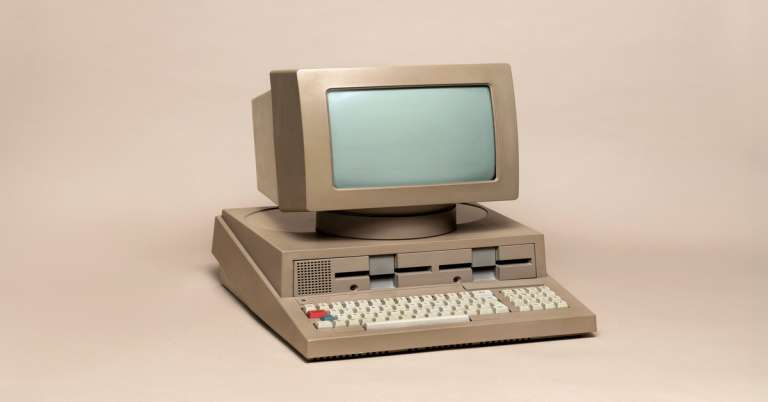In the era when a high-tech approach and blistering development are the order of the day, one may forget about the importance of old-fashioned computing. Nevertheless, the experiences that were gained during the early years of computing can present invaluable information to the current innovators and technologists. Vintage computing is a broad term used to refer to a collection of historical computers, software and practices that brought us to the digital age that we are in today. Through the knowledge and appreciation of these primitive systems, we are able to generate lessons that can not only guide us in current technological crafts but also be inspirational to the innovations made in the future.
The Roots of Innovation
Vintage computing is sometimes described as systems dating back as late as the 1970s, 1980s and even to the 1990s, when computers were first starting to reach day-to-day life. In the same period, great minds such as Steve Jobs, Bill Gates among others were laying down the foundation to what was to be later known as a digital revolution. By examining these pioneering figures of today, some of the most important lessons can be observed that are applicable in the present day.
Embracing Limitations
Among the most important aspects of old-time computing are the limitations that the pioneer computer engineers had. The small processing power, small memory, and poor software capabilities required innovators to be creative. As an example, the initial software developers needed to squeeze their program into the restricted memory constraints of the computers such as the Commodore 64 or the Apple II. The need to be efficient was the reason behind this culture of ingenuity where programmers had learned to make the most out of the little they had.
Lesson to Innovators: Sometimes being constrained can present an innovative solution. Instead of taking limitations as a hindrance, the future innovators ought to perceive them as a chance to come out of the box and create new strategies.
The Importance of Community
A lot of community among developers and enthusiasts of the old computing times was also an order of the day. The first computer clubs like the Homebrew Computer club in silicon valley where people could exchange ideas, troubleshoot and collaborate on projects. Such a culture of collaboration led to the creation of revolutionary technologies and programs because people shared knowledge and resources.
Lesson to Innovators: It can help to establish a community of innovation in order to collaborate and share knowledge. The current innovators ought to find networks of individuals who share common views in order to create an atmosphere in which ideas can thrive and develop.
Learning from Failure
Failure was something usual in the realm of old-fashioned computing. Old systems were frequently characterized by huge problems, both in hardware and software errors. Nevertheless, the failures did offer valuable learning experiences. As an example, the early video games went through a lot of failures, but every failure helped in perfecting the technology and making it more user friendly. Firms such as Atari and Nintendo also know their mistakes to come up with some of the most popular games and consoles of all time.
Innovation Lesson: failure is an essential component of the innovation process. Failure should be accepted as a lesson and not a failure, which would result in discoveries and tremendous improvement in technology.
Conserving the Past to the New Generations
The fact that the history of technology is preserved is one of the strongest arguments to study vintage computing. The first computers and software that goes with it give us an insight into the development of technology and the role it has played in the society of today. Several archives (such as the Computer History Museum and various online archives) are striving to preserve such artifacts to make sure that future generations could learn about the past.
Learning How Technology has Evolved
Vintage computing enables us to follow the line of technological innovation. Through the exploration of some of the first systems, we are able to view how far we have gone as well as what the basic principles were that are still in use today. As an illustration, the development of the personal computers out of the punch cards transformed the interaction of the people with technology, and this is the reason why people have user friendly interfaces in the current world.
Innovator lesson: Becoming a technologist, in this case, the history of technology makes the existing innovations contextualized. More innovators in the future can learn the experiences of their predecessors, the achievements and the errors, and develop a system based on the old principles without the need to come up with something new.
Inspiring the Next Generation Innovators
Vintage computing is also an inspiration to upcoming technologists and innovators. The lives of the first computer pioneers who have persevered to come up with the technological marvel they have remind us of the strength of perseverance and imagination. A case in point is the biography of Ada Lovelace, who is commonly considered as the first computer programmer, where visionary thought is very crucial in technology.
Lesson to Innovators: Past computer leaders can inspire and encourage future computer leaders. Knowing what they went through and what they had to overcome can make one who is beginning his or her own technological mission feel determined and inventive.
The Retro Cultural Impact and the Retro Aesthetic
Outside the technical instruction, there has been a deep cultural influence of vintage computing as well. The retro that comes with the first computers and video games has been revived in recent years, which has impacted art, design, and even fashion. This retrocomputing is a nostalgia of the simplicity and creativeness of the early technology.
Harnessing Nostalgia
The renewed interest in vintage computing has seen the invention of new technologies that merge the old and the new. Developers in the modern world are producing retro style games and software that honors the early times and includes modern design and technology. This combination of nostalgia and innovation shows that a backward-looking approach can find a progressive solution.
Lesson of Techno Visionaries: Nostalgia may be an effective innovation driver. Innovators are able to inspire the past and develop products that appeal to the users at the emotional level and therefore develop a better attachment to the technology.
Conclusion
Vintage computing is not only important because of its historical importance but also because it can teach current and future generations of innovators the necessary lessons. Restrictive thinking, community building, failure and technological history can help us understand things that guide our present endeavors and inspire progress in the future by learning, embracing restrictions and taking part in community building.
When we are living in such a changing world of technology, it is necessary not to forget the origins of innovations and the names of those who opened the way. Vintage computing helps us remember that creativity, teamwork and tenacity are the keys to success. It is possible to shed some light to the future by examining the past so that the culture of innovation will keep on prospering long after we are gone. Learning the lessons of old computing is not only a matter of nostalgia, it is also about creating a culture of innovation that does not ignore the past, but it takes a risk to determine the future.







Leave a Comment